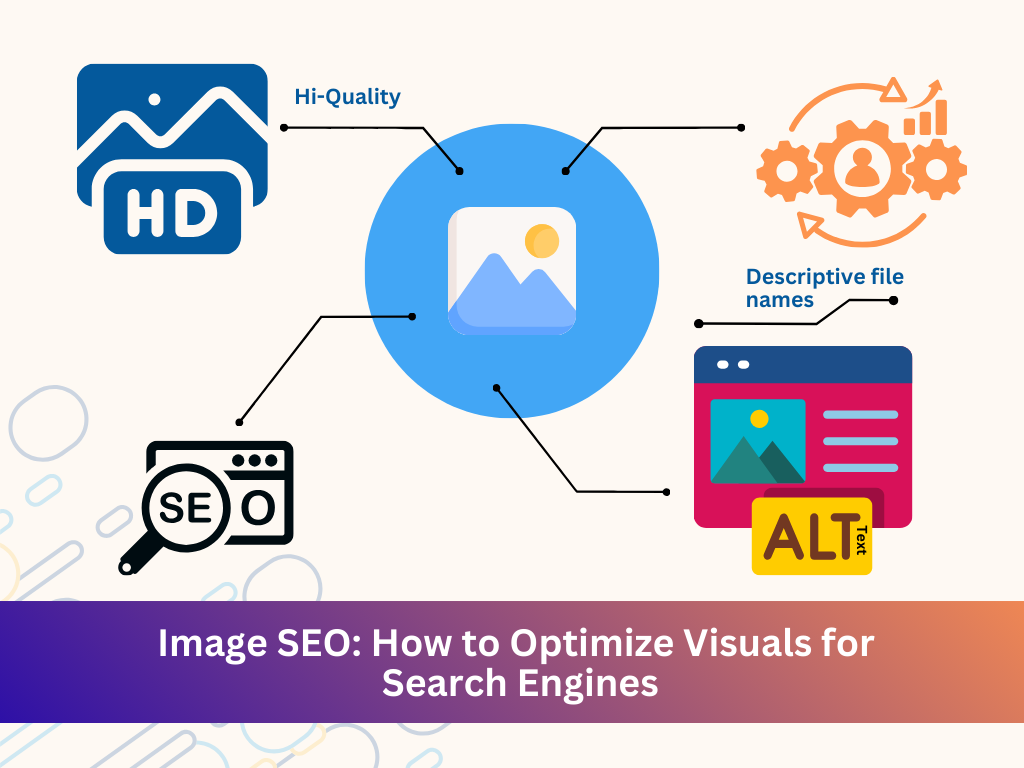
Introduction
Optimizing images for search engines is crucial for improving website visibility, enhancing user experience, and boosting organic traffic. Search engines rely on well-optimized images to understand context and deliver relevant search results. This guide outlines best practices for image SEO to ensure your visuals rank higher in search results.
Why Image SEO Matters
- Improves Page Load Speed: Properly optimized images enhance site performance.
- Enhances User Experience: Clear, high-quality visuals keep users engaged.
- Boosts Organic Traffic: Image search can drive significant visitors to your site.
- Better Accessibility: Alt text helps visually impaired users understand images.
Best Practices for Image SEO
1. Use Descriptive File Names
Best Practice: Rename image files with relevant keywords before uploading.
- Avoid generic names like IMG001.jpg or photo1.png
- Use descriptive, keyword-rich names like red-running-shoes.jpg
- Separate words with hyphens (not underscores or spaces)
2. Optimize Alt Text
Best Practice: Provide clear, keyword-focused alt text.
- Accurately describe the image in a concise manner
- Include primary keywords naturally
- Avoid keyword stuffing
3. Choose the Right Image Format
Best Practice: Select formats that balance quality and performance.
- JPEG for high-quality images with compression
- PNG for transparent backgrounds
- WebP for superior compression and quality
- SVG for scalable vector graphics
4. Compress Images for Faster Loading
Best Practice: Reduce image size without compromising quality.
- Use tools like TinyPNG, ImageOptim, or ShortPixel
- Leverage modern compression algorithms
- Enable lazy loading to defer offscreen images
5. Implement Responsive Images
Best Practice: Ensure images adapt to different screen sizes.
- Use the <picture> element or srcset attribute for multiple resolutions
- Optimize for mobile-first indexing
- Test responsiveness across devices
6. Add Structured Data for Images
Best Practice: Help search engines understand your images better.
- Use Schema markup for product images, recipes, and events
- Implement Open Graph and Twitter Card tags for social media sharing
- Validate structured data using Google’s Rich Results Test
7. Host Images on a Fast, Secure Server
Best Practice: Ensure images load quickly and securely.
- Use a reliable CDN (Content Delivery Network) for faster global access
- Enable HTTPS for secure browsing
- Optimize caching settings for frequent visitors
8. Optimize Image Captions and Surrounding Text
Best Practice: Provide relevant context around images.
- Write descriptive captions when necessary
- Place images near relevant content for better indexing
- Use headings and bullet points to structure information
9. Leverage Image Sitemaps
Best Practice: Help search engines discover your images.
- Include image URLs in your sitemap.xml
- Submit image sitemaps through Google Search Console
- Ensure all images are crawlable by search engines
10. Monitor Image Performance
Best Practice: Track image SEO effectiveness.
- Use Google Search Console to check image indexing
- Analyze traffic sources from Google Image Search
- Regularly update and replace outdated images
Optimizing images for SEO enhances website performance, user experience, and search visibility. By implementing descriptive file names, optimized alt text, responsive formats, structured data, and fast-loading techniques, you can maximize your image rankings and drive more organic traffic.
